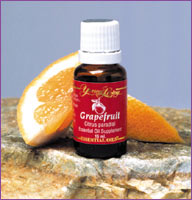Single Oils
- Basil

- Basil (Ocimum basilicum) can be relaxing to muscles that are sore or strained due to exercise. It may also be used to soothe insect bites when applied topically. Beneficial for mental fatigue, basil may help stimulate and sharpen the sense of smell. This herb is grown and distilled at the Young Living Farms.
- Cedarwood
- Cedarwood (Cedrus atlantica) was recognized historically for its calming, purifying properties and is used to benefit the skin and tissues near the surface of the skin. It also helps calm nervous tension.
- Cinnamon Bark
- Cinnamon Bark (Cinnamomum verum) is among the most antiseptic essential oils. It has been produced in Sri Lanka for over 2,000 years.
- Clary Sage
- Clary Sage (Salvia sclarea) can help with mild mood changes and other physical discomforts in a woman's monthly cycle. Quickens the senses; supports a positive mood. This plant is grown and distilled at the Young Living Farms.
- Clove
- Clove (Syzygium aromaticum) is one of the most antiseptic essential oils. Eugenol, its principal constituent, is used synthetically in the dental industry for the numbing of gums.
- Eucalyptus Globulus
- Contains a high percentage of the compound eucalyptol, a key ingredient in many antiseptic mouth rinses. Often used for the respiratory system, eucalyptus has been investigated for its effect on insects in a study called "Laboratory Evaluation of a Eucalyptus-based Repellant Against Four Biting Arthropods," published in Phytotherapy Research.
- Eucalyptus Radiata
- One of the most versatile of the eucalyptus oils, is suitable for topical use, diffusing, and even direct inhalation. Relatively gentle and nonirritating, it has long been an ingredient in some of our most popular blends. This antiseptic oil has been studied for its support of the immune system.
- Fennel
- Fennel (Foeniculum vulgare) is antiseptic and stimulating to the circulatory and respiratory systems.
- Frankincense
- Frankincense (Boswellia carteri) is considered a holy anointing oil in the Middle East and has been used in religious ceremonies for thousands of years ( ...[T]hey presented unto him gifts; gold, and frankincense, and myrrh. Matthew 2:11). It was well known during the time of Christ for its anointing and healing powers. Frankincense is now being researched and used therapeutically in European and American hospitals. It is stimulating and elevating to the mind and helps in overcoming stress and despair. It may also support the immune system.
- Geranium
- Geranium (Pelargonium graveolens) has been used for centuries for skin care. Its strength lies in the ability to revitalize tissue. It is excellent for the skin, and its aromatic influence helps release negative memories.
- Ginger
- Ginger (Zingiber officinale) is used to combat nausea, vomiting, or dizziness associated with motion sickness and has been studied for its gentle, stimulating effects.
- Goldenrod
- Goldenrod (Solidago canadensis) supports the circulatory system, urinary tract, and liver function. It has relaxing and calming effects.
- Grapefruit
- Grapefruit (Ctirus x paradisi) works as a mild disinfectant. Diffuse for a refreshing, uplifting aroma. Like many cold-pressed citrus oils, it has unique fat-dissolving characteristics.
- Helichrysum
- Helichrysum (Helichrysum italicum) has been studied in Europe for regenerating tissue and improving skin conditions, nerves, and circulation.
- Juniper
- Juniper (Juniperus osteosperma and/or J. scopulorum) may work as a detoxifier and cleanser that also benefits theskin. It has also been used to support proper nerve function. This tree is wildcrafted on Utah mountain land, and its branches are distilled at the Young Living Farms.
- Lavender
- Lavender (Lavandula angustifolia) is the most versatile of all essential oils. Therapeutic-grade lavender has been highly regarded for the skin. The French scientist Rene Gattefosse was the first to discover these properties when he severely burned his hands in a laboratory explosion. Lavender has also been clinically evaluated for its relaxing effects. It may be used to cleanse cuts, bruises, and skin irritations. The fragrance is calming, relaxing, and balancing — physically and emotionally. This plant is grown and distilled at the Young Living Farms.
- Ledum
- Ledum (Ledum groenlandicum) has been used for years in folk medicine. As a tea, ledum soothed stomachs, coughs, and hoarseness. It was also believed to calm occasional nervousness.
- Lemon
- Lemon (Citrus limon) has antiseptic-like properties and contains compounds that have been studied for their effects on immune function. It may serve as an insect repellent and may be beneficial for the skin.
- Lemongrass
- Lemongrass (Cymbopogon flexuosus) is used for purification and digestion. Research was published in Phytotherapy Research regarding topically applied lemongrass and its powerful properties. Lemongrass scores 17,765 on the antioxidant ORAC scale developed at Tufts University.
- Marjoram
- Marjoram (Origanum majorana) is used for soothing muscle soreness due to exercise. It assists in calming the nerves and is has antiseptic properties.
- Melaleuca Alternifolia
- Melaleuca Alternifolia is highly regarded as an antiseptic essential oil. Young Living's melaleuca has high levels of terpinenol, which is the key active constituent.
- Myrtle
- Myrtle may support the endocrine system. It has also been researched for its soothing effects when inhaled.
- Nutmeg
- Nutmeg (Myristic fragrans) helps support the adrenal glands for increased energy. Historically, it has been used to benefit ciruclation and muscle aches and pains. It also helps to support the nervous system and may assist in overcoming nervous fatigue.
- Orange
- Orange (Citrus sinensis) brings peace and happiness to the mind and body. It has been recognized to help a dull, oily complexion.
- Oregano
- Oregano (Origanum compactum) was recently shown in laboratory research conducted at Weber State University, Ogden, Utah, to have a 99 percent rate of reducing airborne bacteria. Oregano scores 153,007 on the antioxidant ORAC scale. How to use: Apply topically neat to bottoms of feet. Mix with V-6 Mixing Oil if applying elsewhere on the skin. May be used undiluted in Raindrop Technique. Add to food or soy or rice milk as a dietary supplement or flavoring. Diffuse to purify air.
- Patchouly
- Patchouly (Pogostemon cablin) is very beneficial for the skin and may help prevent wrinkled or chapped skin. It is a general tonic and may help the digestive system. It is also has antiseptic properties and helps relieve itching.
- Peppermint
- Peppermint (Mentha piperita) is one of the oldest and most highly regarded herbs for soothing digestion. Jean Valnet, M.D., studied peppermint's effect on the liver and respiratory systems. Other scientists have also researched peppermint's role in affecting impaired taste and smell when inhaled. Dr. William N. Dember of the University of Cincinnati studied peppermint's ability to improve concentration and mental accuracy. Alan Hirsch, M.D., studied peppermint's ability to directly affect the brain's satiety center, which triggers a sense of fullness after meals. This plant is grown and distilled at the Young Living Farms.
- Pine
- Pine (Pinus sylvestris) was first investigated by Hypocrites, the father of Western medicine, for its benefits to the respiratory system. Pine is used in massage for stressed muscles and joints. It shares many of the same properties as Eucalyptus globulus, and the action of both oils is enhanced when blended. Avoid oil adulterated by turpentine, a low-cost but potentially hazardous filler.
- Roman Chamomile
- Roman Chamomile (Chamaemelum nobile) may help calm you and relieve restlessness and tension. It is used cosmetically in Europe for the skin. This plant is grown and distilled at the Young Living Farms.
- Rosemary
- Rosemary (Rosmarinus officinalis CT 1,8 cineol) has been researched for its antiseptic properties. It may be beneficial for the skin and for helping overcome mental fatigue.
- Rosewood
- Rosewood (Aniba rosaeodora) is soothing and nourishing to the skin. It has been researched at Weber State University for its inhibition rate against gram positive and gram negative bacterial growth.
- Sandalwood
- Sandalwood (Santalum album) is high in sesquiterpenes and has been researched in Europe for its ability to oxygenate a part of the brain known as the pineal gland, the seat of our emotions. The pineal galnd is responsible for releasing melatonin, a powerful homrone that enhances deep sleep. Sandalwood is similar to frankincense oil in its support of nerves and circulation. It was used traditionally for skin revitalization, yoga, and meditation, and has been found to help remove negative programming from the cells.
- Spearmint
- Spearmint (Mentha spicata) oil helps support the respiratory and nervous systems. It may help open and release emotional blocks and bring about a feeling of balance. This plant is grown and distilled at the Young Living Farms.
- Spruce
- Spruce (Picea mariana) oil helps support the respiratory and nervous systems. Its aromatic influences help to open and release emotional blocks, bringing about a feeling of balance.
- Tangerine
- Tangerine (Citrus nobilis) is a calming essential oil. It helps with occasional nervous irritability. Tangerine is rich in the powerful antioxidant d-limonene.
- Thyme
- Thyme (Thymus vulgaris) is one of the most antiseptic essential oils. It contains thymol, which has been studied for its effect on gingivitis and plaque-causing organisms in the mouth. It may be beneficial in helping to overcome fatigue and exhaustion. This plant is grown and distilled at the Young Living Farms.
- Wintergreen
- Wintergreen (Gaultheria prcumbens) contains the same active ingredient (methyl salicylate) as birch and is beneficial for massage associated with bone, muscle, and joint discomfort associated with exercise.
- Ylang Ylang
- Ylang Ylang (Cananga odorata) may be extremely effective in calming and bringing about a sense of relaxation. This native flower of Madagascar and the Reunion Islands is symbolic of love, and the fragrant, pale yellow petals are often strewn across the marriage bed. Its soft, floral scent is often used in men's fragrances as an alternative to the sweeter and more feminine rose.
{Back to top}




